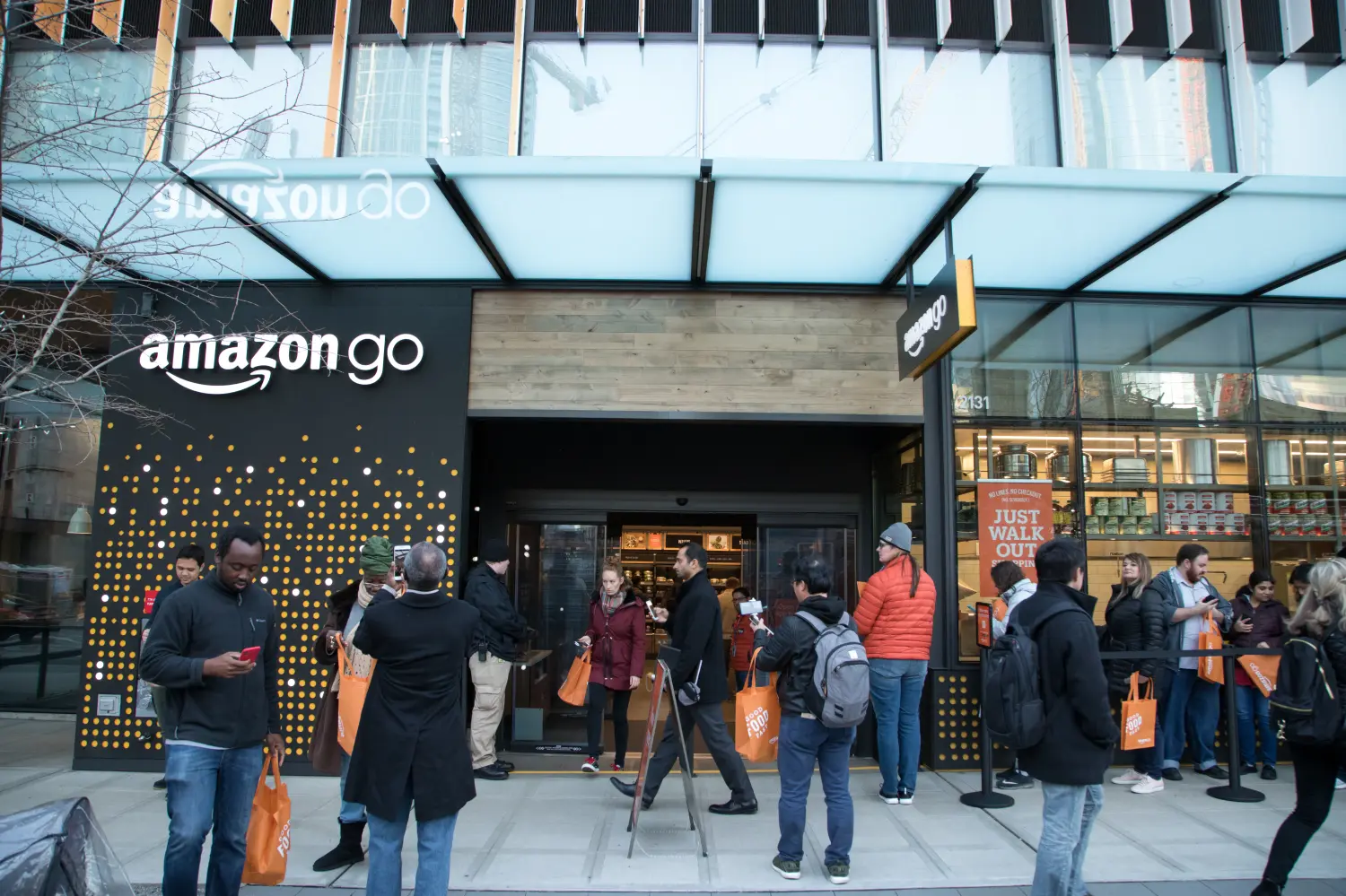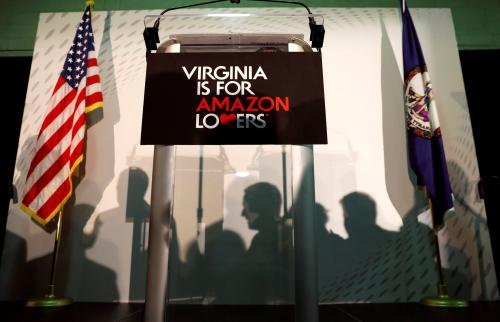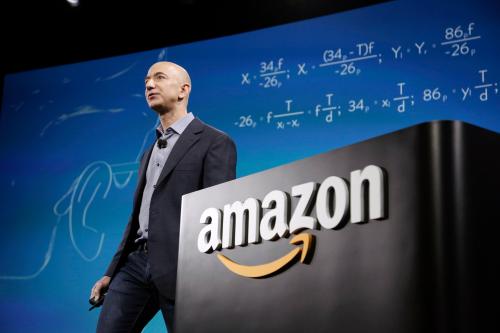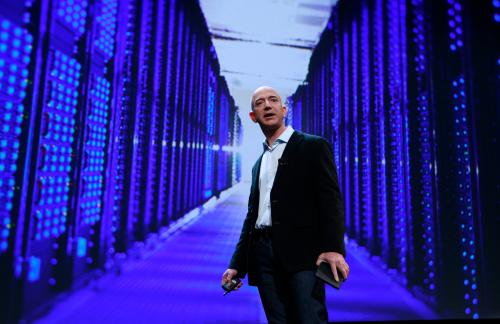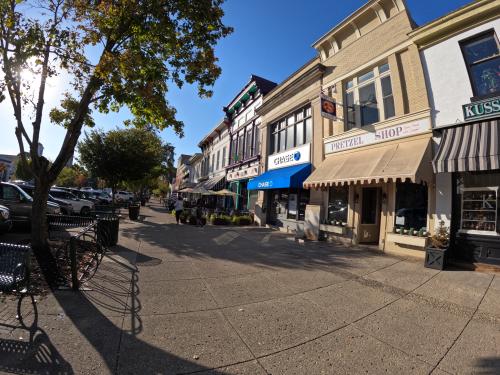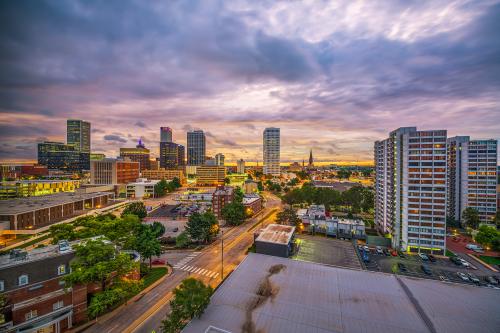Amazon’s decision to cancel its New York headquarters investment has led to intense debate among academics, politicians, and civil society. The split culminated Amazon’s very public search process in which 238 U.S. cities submitted detailed bids to the company to host its “second headquarters,” or HQ2. Many of these bids remain secret, shielded from public records laws due to exceptions to public disclosure of economic development projects, or the use of non-public entities, such as Chambers of Commerce, to submit the bid. But for 26 publicly-released bids, we have a rare opportunity to peek under the hood of U.S. regional economic development. Here are five main takeaways from a review of these bids.
1. We know more about HQ2 than most economic development deals.
Many journalists and civic leaders expressed frustration over the lack of transparency in the HQ2 process. Few cities provided the full details of their offers during the process, and cities such as Austin, Denver, Indianapolis, Houston, Los Angeles, and Miami have still not made their proposals public.
Yet the reality is that most corporate site selection processes remain outside the public eye. The fact that Amazon made this a public competition led to additional scrutiny of the site selection process. Numerous local journalists, such as those in the Dallas and Denver areas, were able to explore local proposals and reveal more about this process than most other economic development deals.
2. Economic boosterism is dominated by the boosters.
City Amazon HQ2 bids came from a variety of sources, ranging from formal economic development offices, standing non-government organizations such as Chambers of Commerce, or—in the case of Detroit—a nonprofit organization that emerged specifically for the creation of a HQ2 bid. Bids from the 20 finalists included submissions from all of these types of organizations.
Beyond these lead entities, many Amazon bids included an acknowledgement section and letters of support from elected officials, university presidents, CEOs, and other civic and nonprofit groups. It is hard to know how involved each of these letter writers were in putting together the bids, but at the very least, we know who definitely was not at the table.
Across all 26 bids, there was not a single letter from an environmental group, and few letters of support from organizations focusing on affordable housing. In only three cities— Pittsburgh, Philadelphia, and St. Louis—was there any endorsement from organized labor, and that was from the building trades. Other than these few letters of support, there is almost no evidence of broader community involvement in any of these bids.
Across all 26 bids, there was not a single letter from an environmental group, and few letters of support from organizations focusing on affordable housing.
In contrast, almost every bid had endorsements from business groups such as the Chamber of Commerce, as well as letters from large businesses in the area. Real estate developers often either provided endorsements or were central to the bid construction. Detroit’s bid, for example, was submitted by a non-public committee headed by billionaire Dan Gilbert. One of Gilbert’s companies, Bedrock, owns most of the land that would be sold to Amazon, and even included what amounted to a one-page ad in the middle of bid.
For critics of the HQ2 process, or economic development practices in general, these bids offer clear evidence that businesses dominate the “growth machine” in cities, with little role for the rest of civil society.
For critics of the HQ2 process, or economic development practices in general, these bids offer clear evidence that businesses dominate the “growth machine” in cities, with little role for the rest of civil society.
3. The only creativity was the worst type of creativity.
In Amazon’s request for proposals (RFP), the company encouraged cities to think big. But in most cases, the creative thinking was exclusively focused on incentive offers.
Cities varied in their strategic responses to Amazon, but many of the proposals only offered existing economic development incentives. For example, New York’s offer to Amazon, which used existing state and city programs, only scaled up to 50,000 jobs. New York’s state and city incentive offer for half of HQ2 has been estimated at $3.5 billion.
The largest incentive offers sometimes involved tweaking existing tax structures. For instance, Dallas offered an incentives package for a site near the airport that would last for 99 years. The state of North Carolina passed new legislation that increased the amount of income taxes that would be rebated to Amazon, a practice that Good Jobs First has called “paying taxes to your boss.” The irony of this approach is that many of the highest tax—and often most politically liberal—states offered some of the largest incentives to Amazon, opening up a significant gap between what Amazon would pay in taxes and what average businesses and individuals pay.
Many of the highest tax—and often most politically liberal—states offered some of the largest incentives to Amazon, opening up a significant gap between what Amazon would pay in taxes and what average businesses and individuals pay.
In some cases, cities baldly proposed using their location to exploit existing regulations. Las Vegas’ bid section, “Imagine the Possibilities”, put forward a number of ethically questionable propositions, shifting some of Amazon’s non-HQ2 activities—such as relocating Amazon airplane pilots (PrimeAir) from their operations in Kentucky—to “reduce labor costs by avoiding Kentucky’s personal income tax.” Similarly, Kankakee County, Illinois suggested some creative maneuvers to take advantage of the “Interest Income Deduction for Financial Institutions” incentives. The county’s bid suggested Amazon “incorporate a bank” to control their land as a way to take advantage of an incentive for financial institutions.
Chicago’s proposal made waves with a high-quality video pitch complete with a voice over from William Shatner. But Chicago’s bid, kept secret until the city was eliminated, was largely a marketing pitch on the values of the city and a package of incentives that harnessed existing programs. The one unique element was a pitch for $400 million in infrastructure improvements, although the details were hazy.
4. CitIes are used to competing, not collaborating.
In the RFP, Amazon asked for one application from each metropolitan area, hoping to incentivize regionalism. Although there were a small number of regional bids, there was very little regional collaboration. In the Greater Washington metropolitan area, the Northern Virginia suburbs, Maryland suburbs, and the District of Columbia all submitted separate bids. In the Dallas region, individual municipalities proposed competing incentive offers, including offering different Texas state incentives. Even New York’s winning bid had an odd tacked-on section for Staten Island that looked more like a cut and paste addition than a seamless regional pitch.
In some cases what looked like regional collaboration nevertheless fell short. St. Louis developed a bid with Illinois, providing details about sites on both sides of the Mississippi River. Despite renderings of an HQ2 campus in two states and on both sides of the Mississippi River, the incentive details in the bid assumed that all of the investment would be in either Missouri or Illinois.
Only a few standout cities offered honest collaborations. In Virginia, the state’s three city proposals (Northern Virginia, Greater Richmond, and Hampton Roads) had very similar structures (including the table of contents) that provided clear evidence of coordination. Letters of support came not only from local governments and public schools, but also from both the 2017 Democratic and Republican candidates for governor. Most impressive was Toronto’s bid, which included support from the province, as well as detailed letters of support from the different mayors from potential locations.
5. Not everyone played the game.
Numerous cities claimed that they would be disadvantaged by releasing their HQ2 proposal to the public, and some even claimed that they could not release it because of non-disclosure agreements with Amazon.
In reality, any non-disclosure agreements with Amazon came after the first round, and a few cities went public immediately with their proposals, including Boston and Toronto, two finalists.
Other cities did not oversell their communities. Most cities did their best to show off what is right within their communities, but some bids still attempted to turn disadvantages into a compelling pitch. Las Vegas opened with a comment about the recent shootings and how their community is trying to come together around that tragedy. Detroit and Newark pitched Amazon’s power to help revitalize their struggling economies. Baltimore’s proposal was partially framed as giving Amazon the opportunity to transform a community aligned with the company’s values on diversity. These pitches stood out in their honesty and, in many ways, made a compelling case.
Some cities also refused to play the incentive game, only providing a list of existing incentive programs. Even in the second round when Amazon requested additional details on the amount of incentives and their dollar value (with a 6 percent discount rate), cities such as Boston didn’t offer up those dollar figures. Although Virginia offered some firm-specific incentives, Brookings’ Amy Liu argues that many of these incentives were for broader infrastructure and workforce development.
And a few communities, such as San Antonio, simply didn’t put in an Amazon HQ2 bid at all.
There’s a better way to focus on economic development
These bids reveal that the HQ2 competition was largely based on a region’s ability to offer incentives.
The Amazon HQ2 process highlights what is both right and what is wrong about economic development in the United States. Cities and states compete with each other, often for investments in metro areas that span state borders. These bids reveal that the HQ2 competition was largely based on a region’s ability to offer incentives, with many locations providing the maximum amount of incentives that they could with existing programs, and a few cities and states, such as Maryland and New Jersey, passing special incentive legislation for HQ2.
But other HQ2 locations showed that there are other possible responses. A few cities, such as San Antonio, simply didn’t put in a bid. This is commendable for a city, but my own work shows that there is too much political pressure to expect most cities to sit out from these competitions.
One lesson to take away from the HQ2 process is that excessive secrecy and lack of community involvement in the construction of bids can backfire. As the New York example recently showed, powerful politicians and civic groups want a say in this process. Cities and states that provided bids without community feedback were not only missing the opportunity to improve their bids with community input, but they undermined the entire process when their communities determined the bids simply weren’t credible. Meanwhile, cities like Toronto and Boston provided full details on their bids from the beginning of the process. Ideally, these bids should include voices from the community representing labor, environmental groups, and affordable housing advocates.
A second and related lesson is that leading with investments as broader drivers of economic development is an attractive proposition for a company like Amazon. One of the winning bids—Northern Virginia—provided incentives that were smaller in scale than many of its competitors, but were more targeted to investments in workforce development and infrastructure. So if Amazon was simply trying to maximize its incentives package, it could have located a winner just a few miles away in Montgomery County, Md. and cashed in $8.5 billion in incentives.
And a final point is that the regional competition that we saw in places like the Washington, D.C. area or the competing incentive packages in the Dallas metro area stand in sharp contrast with strong regional collaboration in the Toronto area. This regional coordination was rare among these HQ2 bids, which makes it all the more valuable for communities.
In the end, many of these HQ2 bids looked very similar. Whether they were non-public bids influenced by the support of area businesses, or simply an attempt to harness every possible incentive dollar for Amazon, the lack of civic input was palpable. Cities and their residents deserve a more transparent and community-focused path to economic development. Perhaps if enough local decisionmakers understand that, the next time there’s a massive company sweepstakes underway, 238 locations won’t be pitching the same thing.
List of HQ2 bids
1. Albany, N.Y.
2. Arlington, Va. (Finalist)
3. Atlanta, Ga. (Finalist)
4. Baltimore, Md.
5. Boston, Mass. (Finalist)
6. Buffalo, Rochester, N.Y.
7. Camden, N.J.
8. Chicago, Ill. (Finalist)
9. Detroit, Mich.
10. Jersey City, N.J.
11. Kankakee County, Ill.
12. Las Vegas, Nev.
13. Long Beach, Calif.
14. Newark, N.J. (Finalist)
15. New York, N.Y. (Finalist)
16. Philadelphia, Pa. (Finalist)
17. Pittsburgh, Pa. (Finalist)
18. Raleigh, N.C. (Finalist)
19. Richmond, Va.
20. San Diego, Calif.
21. San Francisco, Calif.
22. St. Louis, Mo.
23. Tallahassee, Fla. (Finalist)
24. Toledo, Ohio
25. Toronto, Canada (Finalist)
26. Washington, D.C. (Finalist)

